-
 Bitcoin
Bitcoin $103,528.9455
1.74% -
 Ethereum
Ethereum $2,640.2435
8.75% -
 Tether USDt
Tether USDt $0.9998
-0.04% -
 XRP
XRP $2.5553
4.71% -
 Solana
Solana $179.9792
7.01% -
 BNB
BNB $660.2916
2.69% -
 USDC
USDC $0.9997
-0.04% -
 Dogecoin
Dogecoin $0.2386
9.03% -
 Cardano
Cardano $0.8165
5.03% -
 TRON
TRON $0.2716
3.73% -
 Sui
Sui $3.9640
3.22% -
 Chainlink
Chainlink $17.1893
6.51% -
 Avalanche
Avalanche $26.0265
10.40% -
 Stellar
Stellar $0.3105
4.05% -
 Shiba Inu
Shiba Inu $0.0...01608
8.14% -
 Hedera
Hedera $0.2124
5.09% -
 Pi
Pi $1.2611
19.49% -
 Toncoin
Toncoin $3.4395
7.21% -
 Hyperliquid
Hyperliquid $25.4158
7.55% -
 Polkadot
Polkadot $5.1776
6.78% -
 UNUS SED LEO
UNUS SED LEO $8.7878
2.26% -
 Bitcoin Cash
Bitcoin Cash $408.3998
3.95% -
 Litecoin
Litecoin $103.3464
2.61% -
 Monero
Monero $346.8209
4.15% -
 Pepe
Pepe $0.0...01399
7.81% -
 Bitget Token
Bitget Token $4.8001
3.92% -
 Dai
Dai $0.9998
-0.02% -
 Ethena USDe
Ethena USDe $1.0004
-0.04% -
 Uniswap
Uniswap $6.8937
5.19% -
 Bittensor
Bittensor $460.5593
3.00%
How to adjust the leverage ratio in MEXC contracts? How will the risk change after the adjustment?
Adjusting leverage on MEXC impacts risk: higher leverage amplifies gains/losses, while lower leverage stabilizes but limits profits. Monitor and manage risk effectively.
May 05, 2025 at 06:01 pm
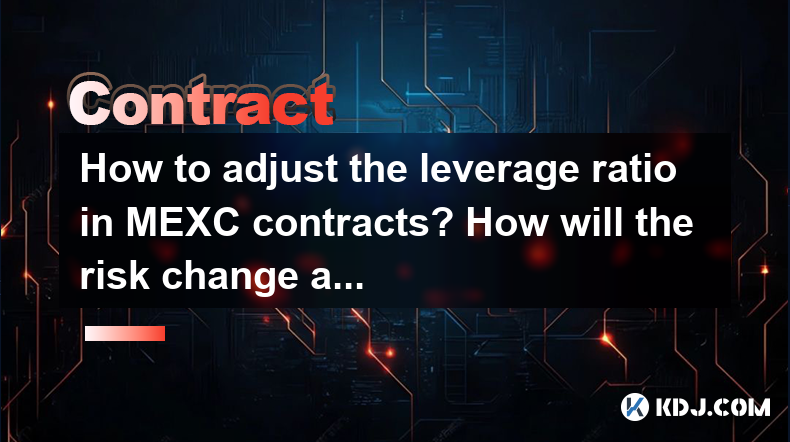
Adjusting the leverage ratio in MEXC contracts is a crucial aspect of managing your trading strategy and risk exposure. Leverage allows traders to amplify their trading position beyond their initial capital, but it also increases the potential for both gains and losses. In this article, we will guide you through the process of adjusting the leverage ratio on MEXC and discuss how these adjustments can impact your risk.
Understanding Leverage in MEXC Contracts
Leverage in the context of MEXC contracts refers to the use of borrowed funds to increase the potential return of an investment. For example, if you use 10x leverage, you can control a position worth 10 times your initial margin. However, it's important to understand that while leverage can magnify profits, it can also magnify losses.
MEXC offers various leverage options, typically ranging from 1x to 125x, depending on the specific contract. The choice of leverage depends on your trading strategy, risk tolerance, and market conditions.
How to Adjust the Leverage Ratio in MEXC Contracts
Adjusting the leverage ratio on MEXC is a straightforward process. Here's a step-by-step guide on how to do it:
- Log into your MEXC account and navigate to the futures trading section.
- Select the contract you wish to trade. MEXC offers a variety of contracts, including perpetual futures and delivery futures.
- Open the trading interface for the selected contract. You will see various options and settings related to your trade.
- Locate the leverage setting. This is usually found near the order entry section, often labeled as "Leverage" or with a similar icon.
- Adjust the leverage ratio by selecting your desired level from the dropdown menu or by manually entering the value. MEXC allows you to choose from predefined leverage levels or enter a custom value within the allowed range.
- Confirm the change. Once you've selected your desired leverage, confirm the adjustment. The new leverage ratio will now apply to your trades for that specific contract.
Impact of Leverage Adjustment on Risk
Adjusting the leverage ratio directly affects your risk exposure. Here's how different leverage levels can impact your risk:
Higher Leverage: When you increase the leverage ratio, you are essentially increasing the size of your position relative to your margin. This means that even small price movements can result in significant gains or losses. Higher leverage increases the potential for both profits and losses, making your position more volatile and riskier.
Lower Leverage: Conversely, reducing the leverage ratio decreases the size of your position relative to your margin. This results in smaller potential gains or losses from price movements. Lower leverage reduces the risk of significant losses, making your position more stable but also potentially limiting your profit potential.
Practical Example of Leverage Adjustment
Let's consider a practical example to illustrate how adjusting leverage impacts your position and risk:
Scenario 1: You have $1,000 in your account and decide to trade a Bitcoin perpetual futures contract with 10x leverage. This means you can control a position worth $10,000. If the price of Bitcoin moves by 1%, your position will gain or lose $100 (1% of $10,000).
Scenario 2: You decide to reduce the leverage to 5x. Now, with the same $1,000 margin, you can control a position worth $5,000. If the price of Bitcoin moves by 1%, your position will gain or lose $50 (1% of $5,000).
In both scenarios, the percentage change in the price of Bitcoin remains the same, but the absolute gain or loss changes based on the leverage ratio.
Monitoring and Managing Risk After Leverage Adjustment
After adjusting the leverage ratio, it's crucial to monitor and manage your risk effectively. Here are some strategies to consider:
Set Stop-Loss Orders: Use stop-loss orders to automatically close your position if the market moves against you beyond a certain threshold. This can help limit potential losses.
Regularly Review Your Position: Keep an eye on your open positions and the market conditions. Adjust your leverage or close positions if necessary to manage risk.
Diversify Your Portfolio: Don't put all your capital into a single position or contract. Diversifying your trades can help spread risk.
Understand Margin Requirements: Be aware of the initial and maintenance margin requirements for your chosen leverage level. If the market moves against you, you may need to add more margin to avoid liquidation.
Frequently Asked Questions
Q1: Can I change the leverage ratio for an existing open position on MEXC?
A1: Yes, you can adjust the leverage ratio for an existing open position on MEXC. However, you will need to close the current position and open a new one with the adjusted leverage. This process involves some risk, as market conditions can change between closing and reopening the position.
Q2: What happens if I don't have enough margin after adjusting the leverage?
A2: If you don't have enough margin after adjusting the leverage, your position may be at risk of liquidation. MEXC will automatically close your position if the margin falls below the maintenance margin level to prevent further losses.
Q3: How often can I adjust the leverage ratio on MEXC?
A3: You can adjust the leverage ratio on MEXC as often as you like, provided you follow the steps outlined above. However, frequent adjustments can be risky, as they may lead to missed opportunities or increased transaction costs.
Q4: Does MEXC charge fees for adjusting the leverage ratio?
A4: MEXC does not charge a specific fee for adjusting the leverage ratio. However, you may incur trading fees when closing and reopening positions to apply the new leverage level. Always check MEXC's fee structure for the most current information.
Disclaimer:info@kdj.com
The information provided is not trading advice. kdj.com does not assume any responsibility for any investments made based on the information provided in this article. Cryptocurrencies are highly volatile and it is highly recommended that you invest with caution after thorough research!
If you believe that the content used on this website infringes your copyright, please contact us immediately (info@kdj.com) and we will delete it promptly.
- Man Finds 1469 Roman Coins Buried in a Romanian Field
- 2025-05-14 12:05:13
- VanEck Launches VBILL, a Tokenized Fund That Enables Access to Short-Term US Treasuries On-Chain
- 2025-05-14 12:05:13
- United States President Donald Trump Will Probably Trigger an Indirect Crypto Market Rally
- 2025-05-14 12:00:31
- MEXC Points to Bitcoin Dominance Drop and Ethereum's Surge as Signs of a Coming Altcoin Season
- 2025-05-14 12:00:31
- Looking to Buy the Next Big Cryptocurrency? These 3 Cryptos Could Skyrocket This Year
- 2025-05-14 11:55:13
- Bitcoin Set for “Mega Expansion” as Chart Signals Parabolic Price Spike
- 2025-05-14 11:55:13
Related knowledge

What should I do if SUI contract trading encounters a pin? How to protect account security?
May 09,2025 at 01:56am
When trading SUI contracts, encountering a pin can be a frustrating experience, but there are effective strategies to handle such situations and ensure your account remains secure. This article will guide you through the steps to manage a pin in SUI contract trading and provide detailed advice on protecting your account security. Understanding What a Pi...

How do I hedge risks in SUI contract trading? Is long and short dual opening useful?
May 08,2025 at 09:14pm
Trading SUI contracts, like any other cryptocurrency derivative, involves significant risk due to the volatile nature of the market. Hedging is a strategy traders use to mitigate potential losses. In this article, we will explore various methods to hedge risks in SUI contract trading and evaluate the effectiveness of long and short dual opening as a hed...
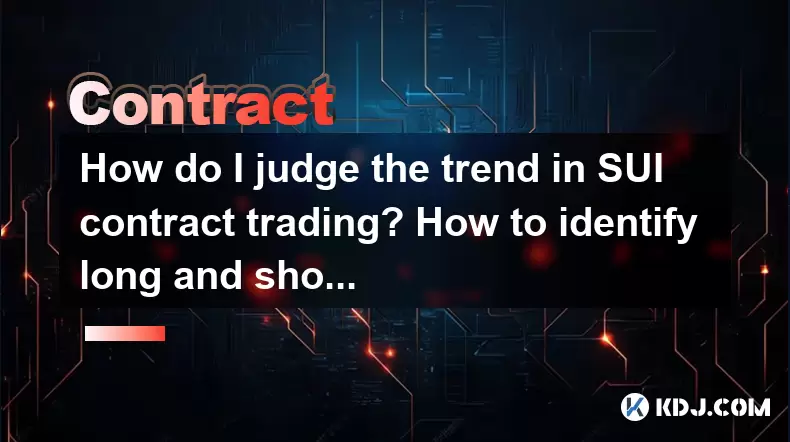
How do I judge the trend in SUI contract trading? How to identify long and short signals?
May 09,2025 at 01:49pm
Understanding SUI Contract TradingSUI contract trading involves trading contracts based on the SUI cryptocurrency, which is a relatively new entrant in the crypto market. To effectively trade these contracts, it's crucial to understand how to judge the market trend and identify long and short signals. This article will guide you through the process of a...
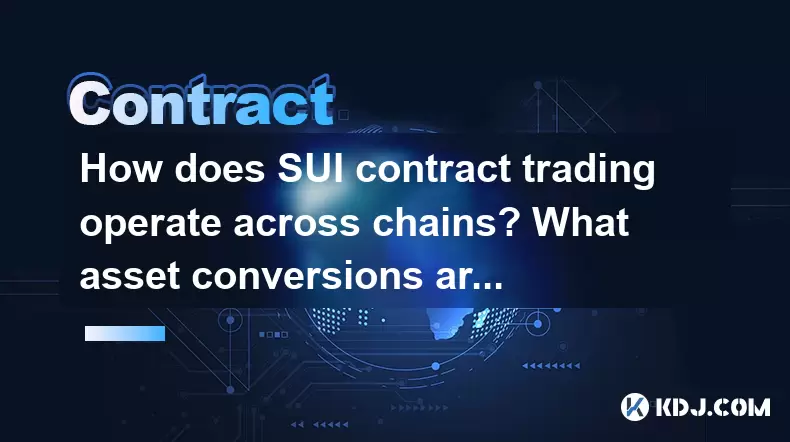
How does SUI contract trading operate across chains? What asset conversions are supported?
May 12,2025 at 02:56am
Introduction to SUI Contract Trading Across ChainsSUI contract trading is a sophisticated mechanism that allows users to engage in decentralized trading across multiple blockchain networks. This process involves the use of smart contracts to facilitate trades, ensuring that transactions are secure, transparent, and efficient. The ability to trade across...
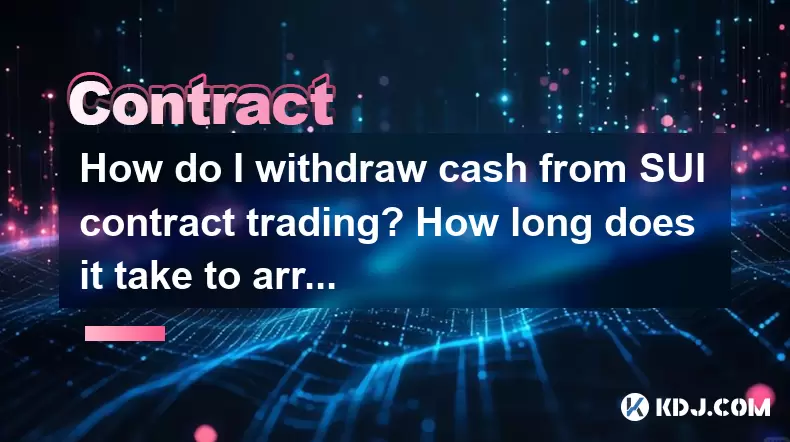
How do I withdraw cash from SUI contract trading? How long does it take to arrive?
May 09,2025 at 02:00am
Introduction to SUI Contract TradingSUI is a popular cryptocurrency that has gained traction in the decentralized finance (DeFi) space due to its efficient transaction processing and smart contract capabilities. Contract trading on the SUI network involves engaging in futures or options contracts based on the SUI token's price movements. When it comes t...
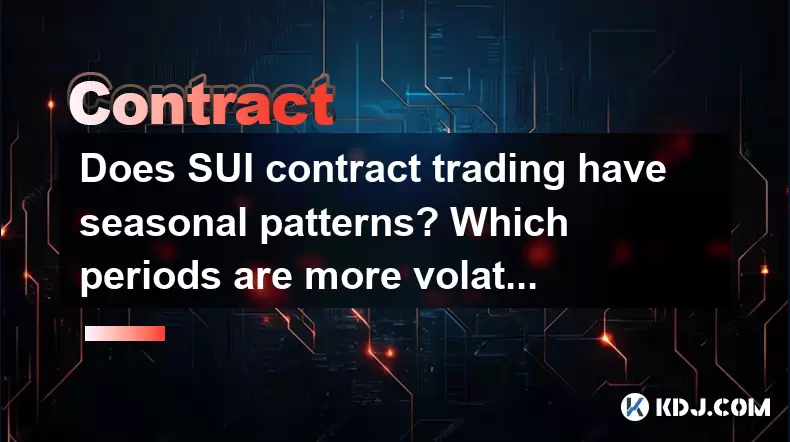
Does SUI contract trading have seasonal patterns? Which periods are more volatile?
May 10,2025 at 11:50pm
The SUI cryptocurrency, like many other digital assets, exhibits certain seasonal patterns in its trading activity. Understanding these patterns can be crucial for traders looking to capitalize on volatility and potential price movements. In this article, we will explore whether SUI contract trading has seasonal patterns, identify the periods that are m...

What should I do if SUI contract trading encounters a pin? How to protect account security?
May 09,2025 at 01:56am
When trading SUI contracts, encountering a pin can be a frustrating experience, but there are effective strategies to handle such situations and ensure your account remains secure. This article will guide you through the steps to manage a pin in SUI contract trading and provide detailed advice on protecting your account security. Understanding What a Pi...

How do I hedge risks in SUI contract trading? Is long and short dual opening useful?
May 08,2025 at 09:14pm
Trading SUI contracts, like any other cryptocurrency derivative, involves significant risk due to the volatile nature of the market. Hedging is a strategy traders use to mitigate potential losses. In this article, we will explore various methods to hedge risks in SUI contract trading and evaluate the effectiveness of long and short dual opening as a hed...

How do I judge the trend in SUI contract trading? How to identify long and short signals?
May 09,2025 at 01:49pm
Understanding SUI Contract TradingSUI contract trading involves trading contracts based on the SUI cryptocurrency, which is a relatively new entrant in the crypto market. To effectively trade these contracts, it's crucial to understand how to judge the market trend and identify long and short signals. This article will guide you through the process of a...

How does SUI contract trading operate across chains? What asset conversions are supported?
May 12,2025 at 02:56am
Introduction to SUI Contract Trading Across ChainsSUI contract trading is a sophisticated mechanism that allows users to engage in decentralized trading across multiple blockchain networks. This process involves the use of smart contracts to facilitate trades, ensuring that transactions are secure, transparent, and efficient. The ability to trade across...

How do I withdraw cash from SUI contract trading? How long does it take to arrive?
May 09,2025 at 02:00am
Introduction to SUI Contract TradingSUI is a popular cryptocurrency that has gained traction in the decentralized finance (DeFi) space due to its efficient transaction processing and smart contract capabilities. Contract trading on the SUI network involves engaging in futures or options contracts based on the SUI token's price movements. When it comes t...

Does SUI contract trading have seasonal patterns? Which periods are more volatile?
May 10,2025 at 11:50pm
The SUI cryptocurrency, like many other digital assets, exhibits certain seasonal patterns in its trading activity. Understanding these patterns can be crucial for traders looking to capitalize on volatility and potential price movements. In this article, we will explore whether SUI contract trading has seasonal patterns, identify the periods that are m...
See all articles






















































































